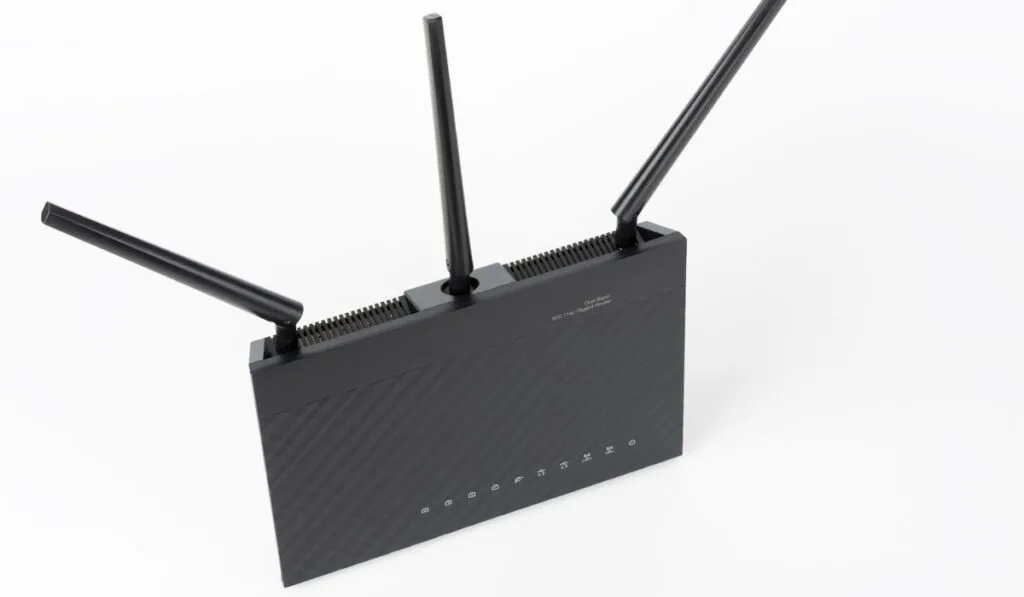Dual-band WiFi routers support both 2.4 GHz and 5 GHz frequencies. These bands are broadcast simultaneously by default, allowing the connected device to connect to the access point with the most stable frequency. This is great for devices with broad WiFi coverage, but most don’t work well when it comes to wireless band selection.
If you have a lot of different devices in your home, manually separating your 2.4 and 5 GHz WiFI could be right for you. It allows you to choose the frequency you use for each device. You can use the 2.4 GHz band for things that don’t need much bandwidth and the 5 GHz band for streaming and gaming.
This article will give you some insights into the easiest way to separate the 2.4 GHz band from the 5 GHz. We’ll also talk about why it’s a good idea and who the best candidates for this setup are.
The Difference Between 2.4 GHz and 5 GHz

2.4 GHz and 5 GHz are just two frequencies used for wireless communication. The difference lies in their bandwidth and range.
The 5 GHz WiFi band offers a larger bandwidth (more efficient), more channels, and less interference. Because it is less congested, the 5 GHz band is also more stable and has stronger signals than the 2.4 GHz band.
However, that benefit also comes with a cost. The 5 GHz band’s signals don’t have a large range, can’t penetrate through walls very well, and are not supported by all devices.
The 2.4 GHz band offers a smaller bandwidth and fewer channels, but it penetrates through walls better. However, because most WiFi-run devices work on 2.4 GHz, it suffers more interference.
This makes each band suitable for different situations. For example, the 5 GHz band can be used by more bandwidth-demanding devices, while the 2.4 GHz band will serve casual users perfectly.
Why Would You Separate 2.4 GHz and 5 GHz bands?
As discussed above, dual-band routers usually produce both 2.4 GHz and 5 GHz signals simultaneously. Therefore, you can choose the best signal band for each individual device.
For example, if your phone is far away from the router, it’ll drop a 5 GHz connection and switch to 2.4 GHz, which has more range. Then, when you walk a couple of meters closer to the router, your phone will find 5 GHz more stable and will switch back to it.
This is called ‘Beam steering.’ Though it works well on many devices, you still need to make sure your device is actually capable of doing it.
Other beam steering problems are the potential of data loss due to abrupt signal changes, battery drain, and slow speeds. They happen due to outdated drivers, older devices that don’t support a 5 GHz connection, or simply lousy manufacturing.
So, if you want to experience the best speeds and signals, we highly recommend separating the 2.4 GHz and 5 GHz bands by putting them on different SSID. Then, you’ll be able to decide on which band to connect to for each device.
In addition, it will allow you to do things with high data transmissions like video streaming on the 5 GHz band while leaving the 2.4 GHz for other things like printers, phones, and microwaves that only need a slower, stable connection. Also, with only one connection at a time, you won’t have to worry so much about speed and stability.
How to Separate 2.4 GHz and 5 GHz Bands?

Setting up separate networks for the 2.4 GHz and 5 GHz isn’t difficult at all. All it takes is a few clicks in your router’s settings menu.
However, the steps will definitely vary depending on the make and model of your router. Therefore, we have provided some general steps below. It would be best to start by checking your specific router’s configuration guide.
- Open any internet browser on a phone/laptop/PC connected to your router’s network.
- Access your router’s menu by typing your IP address in the browser. If you don’t know your router’s IP, you find it in the WiFi details or properties on your devide. Look for “Default Gateway”, then type that into your browser.
- This will open the router’s configuration page. You will need a username and password to access the settings, these can be found on the back of your router or inside the user manual.
- Go to ‘Wireless’ and disable ‘Beam steering,’ or any setting that refers to merging the 2.4GHz and 5GHz WiFi Bands. This option may be in a different menu on some routers, but you should be able to find it semi-easily.
Be sure to check your WiFi settings afterward to ensure that both networks are still enabled. You may need to enter in a new SSID and password for one of the networks.
It’s best practice to have the 2.4GHz network named whatever you want it to be, then the 5GHz named the same thing except with “5G” added to the end of the name.
You’ll likely have to save changes again after doing this, and the router will reboot again.
A Few Extra Things to Consider
- If your router is too old, it might not support this feature.
- If your devices are too old, they might not have the ability to connect to a 5GHz WiFi network, which means they’ll not work on the 5GHz SSID.
- If the above setting doesn’t work, try rebooting the device and/or rebooting the router.
Verdict
The older beam steering method can have many issues, including signal loss and slow speeds. And, if you use WiFi for high-quality video streaming and gaming, you’re probably losing a lot of speed because your devices prioritize the 2.4 GHz band over 5 GHz.
So, if your router has the option to separate the 2.4 GHz and 5 GHz bands, we recommend you do so. It will give you more control over your wireless connections.
You can avoid interference by limiting smart home devices to the 2.4 GHz band and enjoying a faster 5 GHz connection on your work PC or gaming consoles. All of this will improve the overall performance of your network.
For further explanation about the difference between the 2.4 GHz and 5 GHz bands, you can check our articles on the Difference between the 2.4 GHz and 5 GHz WiFi bands.
